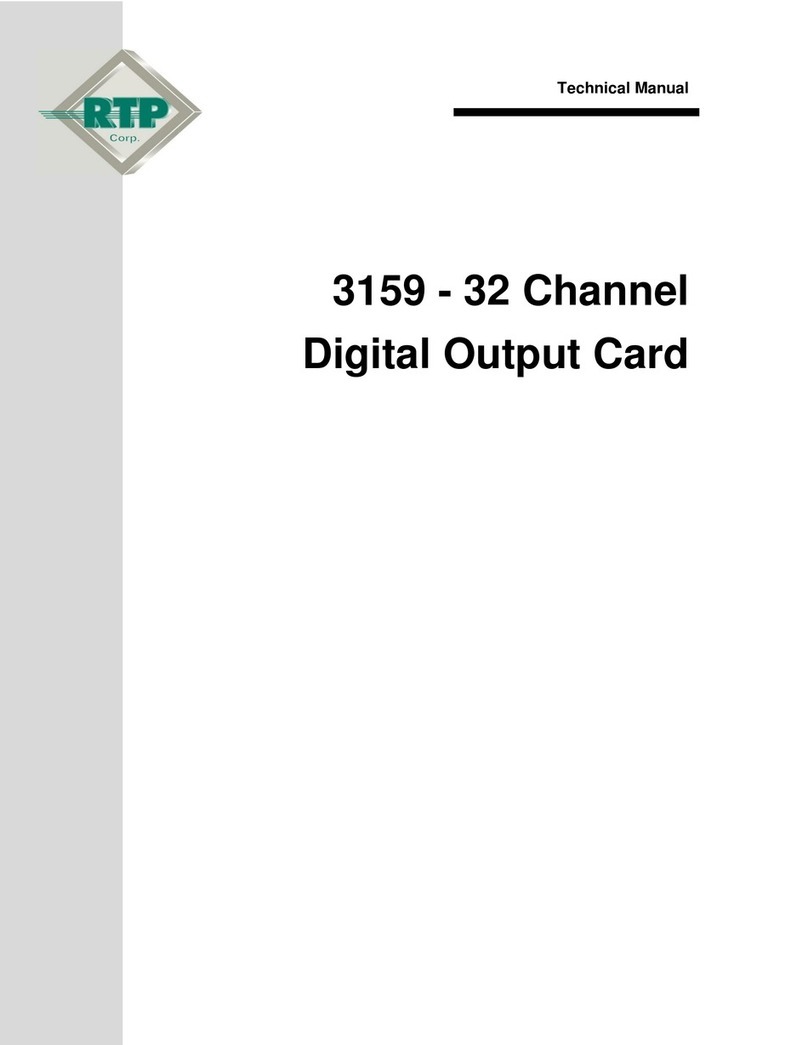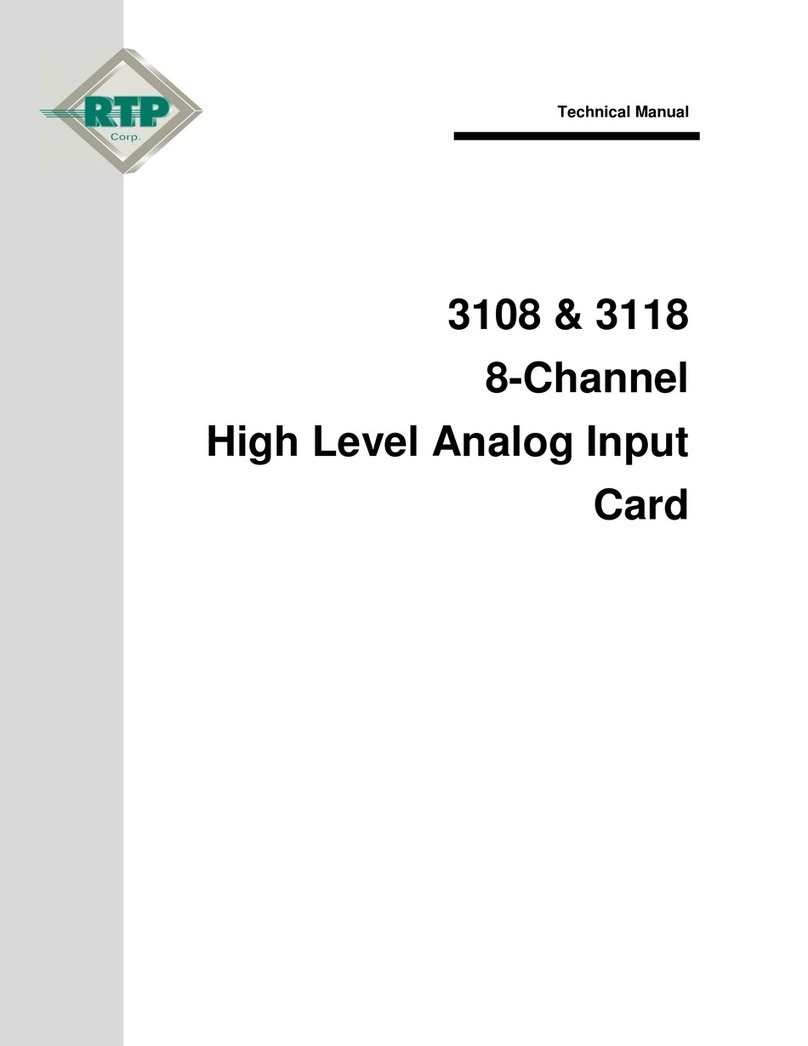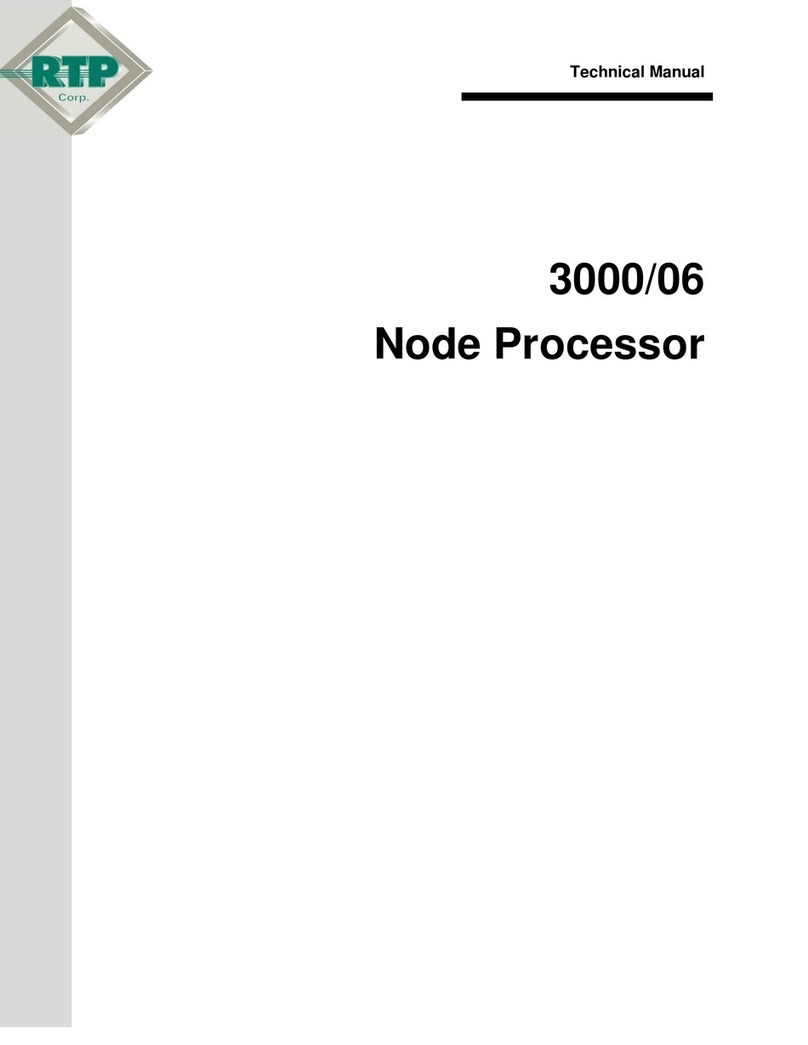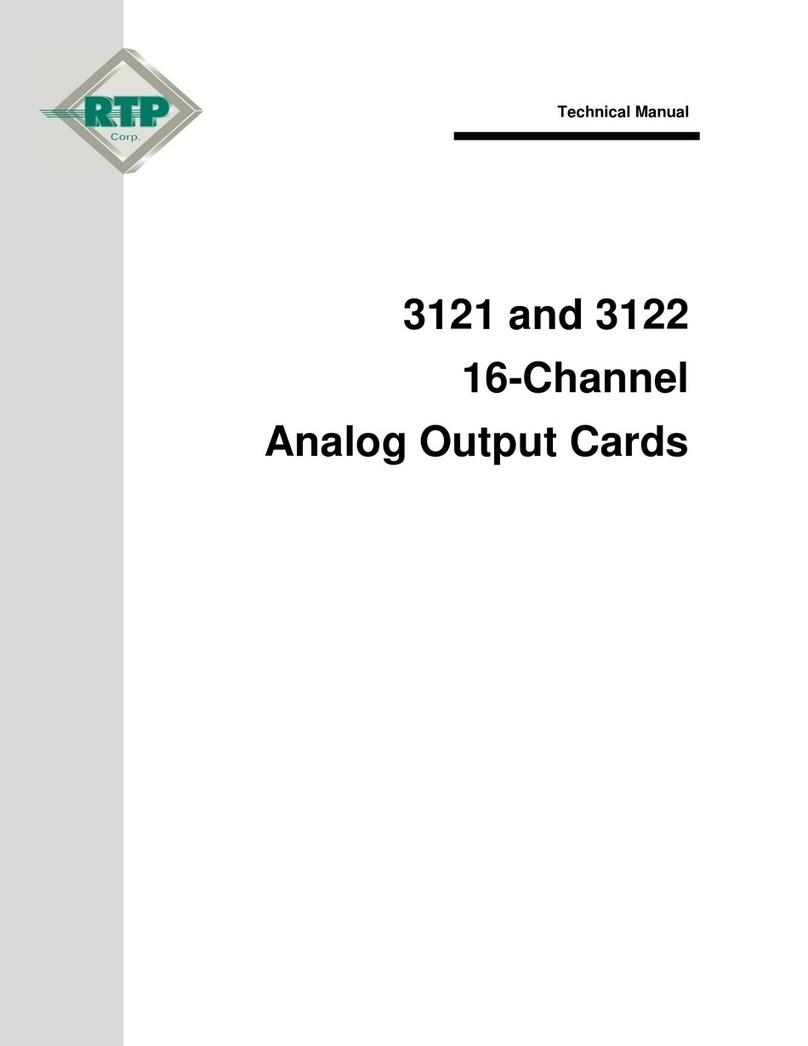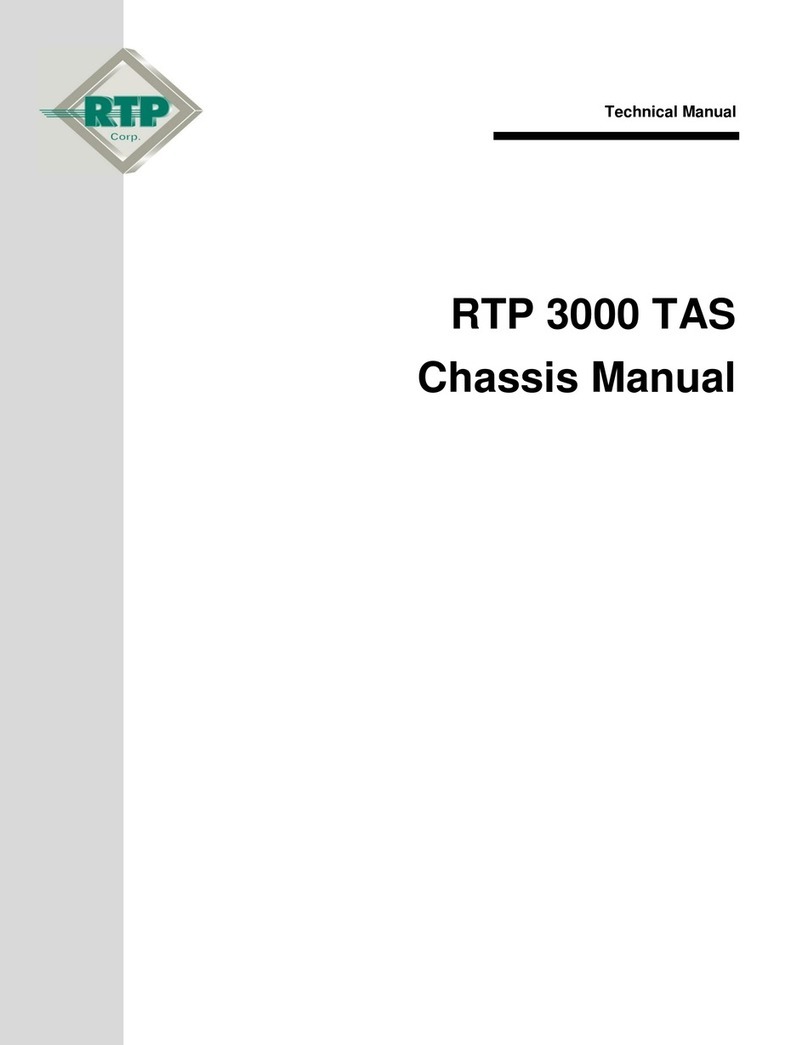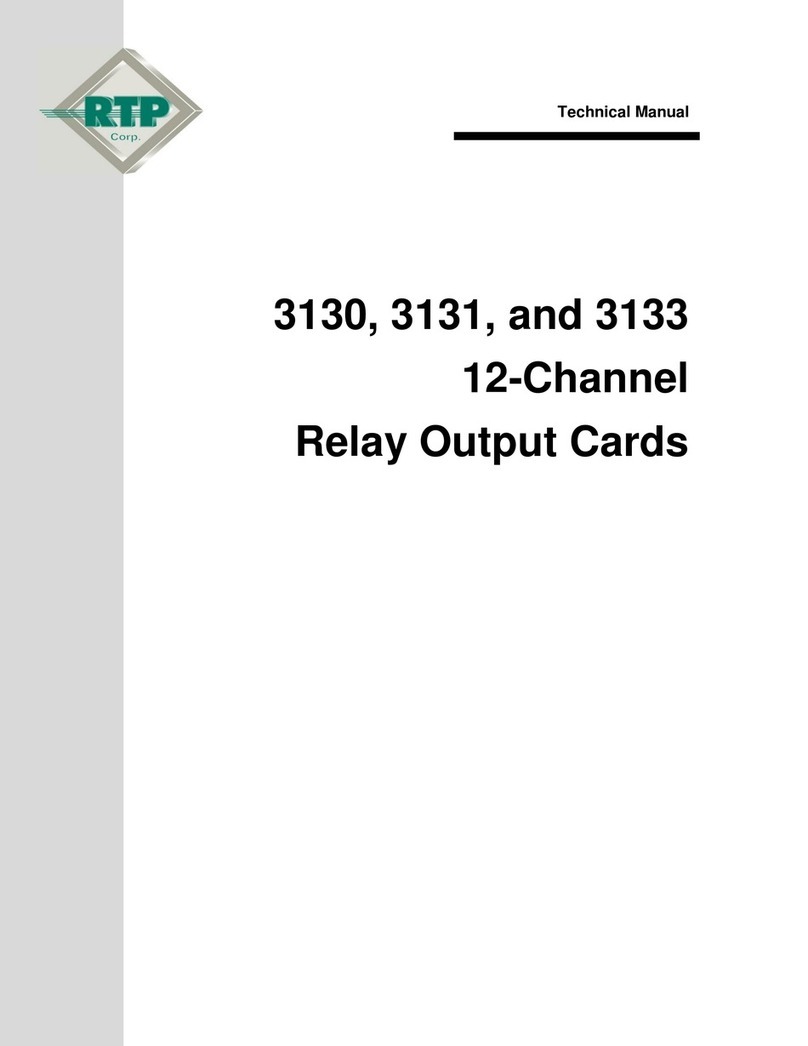
5
An indicator LED, located near the top of the front panel, indicates the overall health status of the
card. If this LED is on, the card is functioning normally; if it is off, the card is offline. If this LED is
on, but the card is shown in red on the NetArrays IOC screen and cannot be enabled, indicates
an error in the cards calibration data.
The 8-Channel RTD card provides a DC-to-DC converter that supplies power to the eight
excitation-current sources. Dual and triple redundant configurations can be implemented by
adding one or two additional cards and cable sets. Up to three Analog Input cards may be
connected to the RTDs in parallel using the same 3099/34-000 Termination Module. The
3099/31-100 Single Termination Module can be used when redundancy is not required.
Each of the channels contain configuration jumper blocks (JP200 through JP203) for selecting
either a 3-Wire RTD connection or a 4-Wire RTD connection. Up to eight 3-Wire RTD’s or four 4-
Wire RTD’s can be connected.
For long term accuracy, the calibration channels should be monitored to the desired accuracy
tolerance.
The 3110 cards scans at 1000 samples per second with a -3dB @ 2KHz double pole filter. The
3120 card scans at 43 samples per second with a -6dB @ 9 Hz double pole filter.
Specifications
Module Safety Integrity Level: Non-interfering with safety rated modules.
Card Address: Determined by the slot of the controller backplane
Number of channels: 8 (3-wire configuration) or 4 (4-wire configuration)
Isolation: 500 V Channel to RTP BUS
Type of protection: Digital isolators (magnetic)
Input Signal Range: 0 to 160 mV
RTD Type and Range: 100 Platinum
–200 °C to +850 °C
18.52 to 390.48
RTD Linearization: Internal (ITS-90: Alpha = 0.00385) or user supplied
RTD Excitation Current:
3-Wire Two 400 A ± 1½% current sources connected to Sense+
and Sense –
4-Wire One 400 A ± 1½% current source on an Excitation Source
Maximum permanent allowed
Voltage (no damage): 6 Volts
Reading under overload condition: Reported in error status word.
Common Points between Channels: All channels common to excitation return
Normal Mode Rejection: 3110: 0 dB at 60 Hz
3120: -39 dB at 60 Hz
Type of Input: Single Ended
Conversion method: Successive approximation
Guard Band: 160mV to 161.618mV






